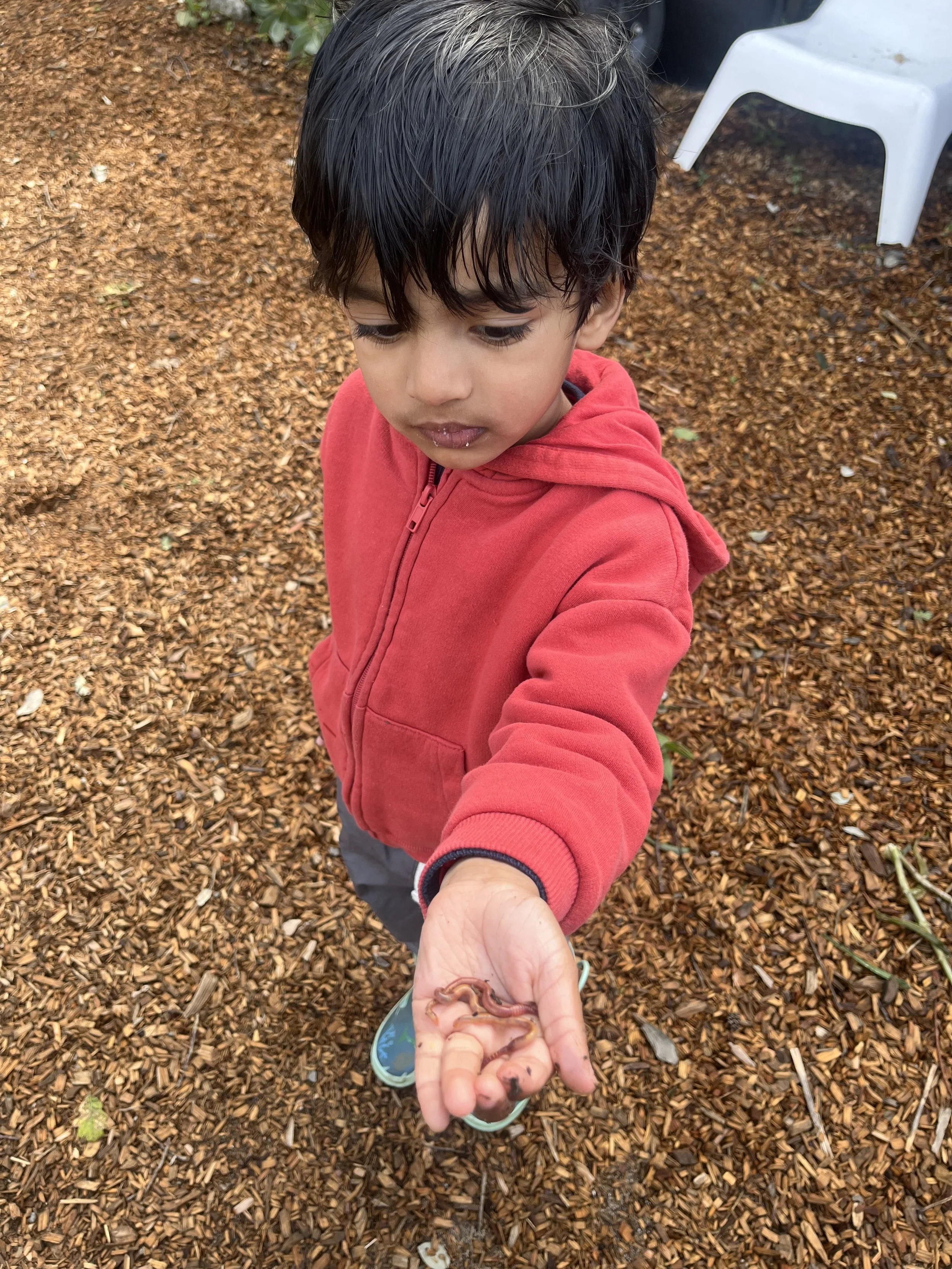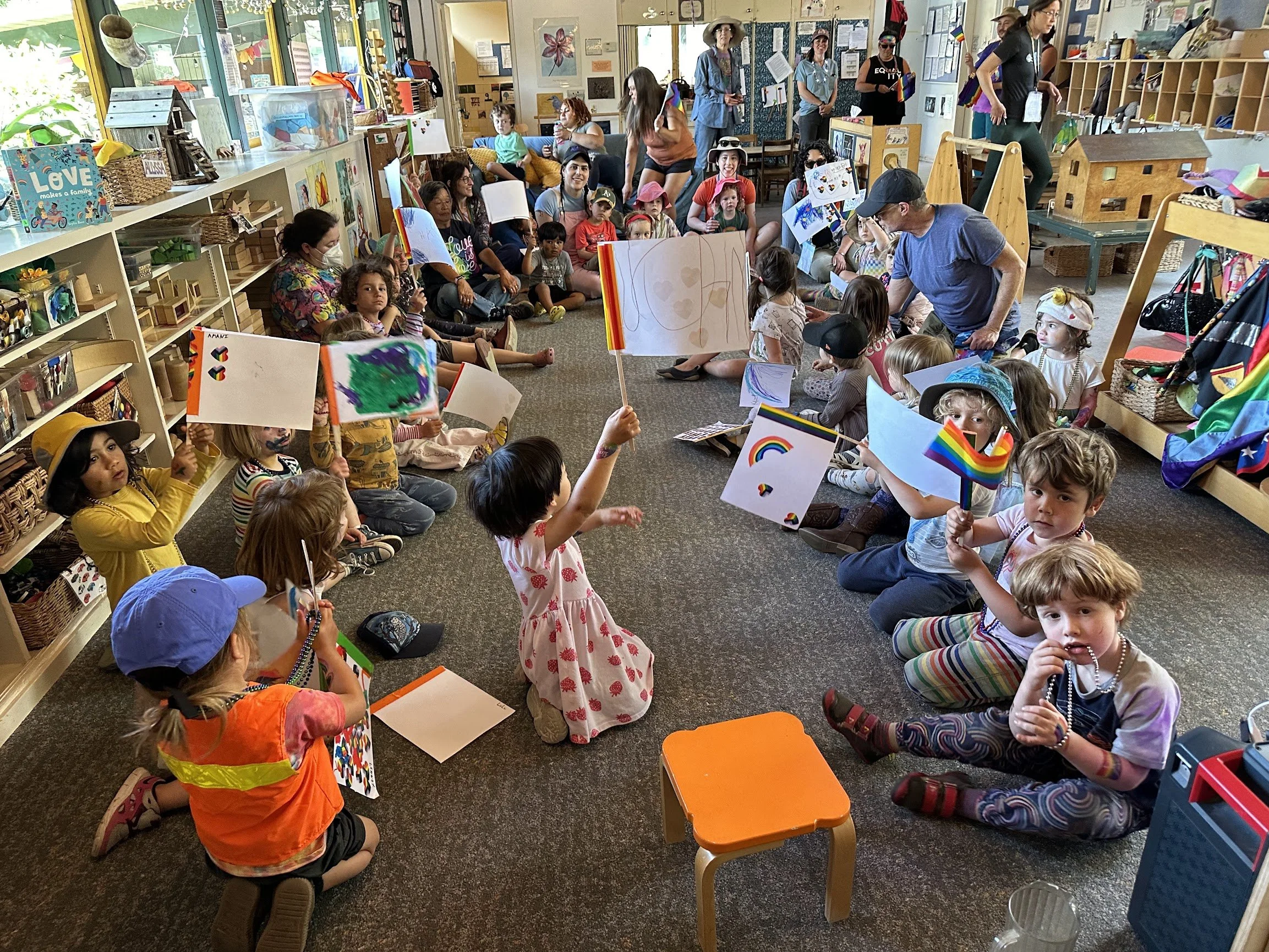
Anti-Bias Education
Why do we practice Anti-Bias Education in preschool?
We practice anti-bias education because we live in a society where biases are deeply ingrained. From infancy, children absorb social messages about who and what is considered important, and they are exposed to stereotypes that stigmatize or associate negative imagery with certain bodies and social groups. Children are injured when they receive messages about themselves—or others—that say they are not fully capable, intelligent, or worthwhile. Dr. Beverly Tatum describes racism as like the “smog in the air”: it’s all around us, and we can’t help breathing it in. We can’t raise children who are “innocent” or “removed” from racism and other biases, because biases pervade our media, culture, institutions, laws, relationships, and our own internal values and beliefs. However, we can actively counter bias through continuous learning and ongoing, age-appropriate conversations with children.
When teachers and families integrate the four anti-bias education goals into teaching and childrearing and engage children in positive, informative conversations about human diversity, children develop the conviction that who they are is valued and important. When adults help children notice and address unfairness, even very young children are able to be strong and clear in standing up for themselves and others.
Preschool is a critical time to introduce anti-bias education because it is during these early years that children begin forming their understanding of themselves and the world around them. Preschoolers are naturally curious about differences and similarities among people. Anti-bias education taps into this curiosity, helping children explore diversity in a positive, constructive way, before stereotypes and prejudices take root.
Anti-Bias education in preschool helps children:
Appreciate the uniqueness of themselves and others
Disrupt the formation of negative stereotypes
Develop important social and emotional skills
Feel safe, valued and included.
The Four Core Goals of Anti-Bias Education
Goal 1: Identity -“I’m okay.”
This goal means supporting children to feel strong and proud of who they are without needing to feel superior to anyone else. It means children will learn accurate, respectful language to describe who they and others are. Teachers will support children to develop and be comfortable within their home culture and within the school culture. Goal 1 is the starting place for all children in all settings.
Goal 2: Diversity - “You’re okay.”
This goal means guiding children to be able to think about and have words for how people are the same and how they are different. It includes helping children feel and behave respectfully, warmly, and confidently with people who are different from themselves. It includes encouraging children to learn about how they are different from other children and about how they are similar. These are never either/or realities because people are simultaneously the same and different from one another. This goal is the heart of learning how to treat all people caringly and fairly.
Goal 3: Justice - “That’s not okay.”
This goal is about building children’s innate, budding capacities for empathy and fairness, as well as their cognitive skills for thinking critically about what is happening around them. It is about building a sense of safety, the sense that everyone can and will be treated fairly.
Goal 4: Activism - “Okay, what are we going to do about it?”
Goal four is about giving children tools for learning how to stand up to hurtful and unfair biased behavior based on any aspect of social identity. Biased behavior may be directed at oneself or another. It may come from another child or adult or from children’s books, television, and films. This goal strengthens children’s development in perspective taking, positive interactions with others, and conflict-resolution education. When children have experiences of making change happen, and making unfair things fair, they develop a sense of individual and collective power that counters
Anti-Bias Education in Action with Children
What Anti-Bias Education Looks Like in Practice with Adults
Commitment to Ongoing Learning
CCC teachers are committed to continuous learning and self-reflection, recognizing the importance of unpacking biases, individually and as a community, even when it feels uncomfortable. Our Diversity and Equity team, comprised of families and staff, plays a crucial role in creating opportunities for families to connect, reflecting on identity, oppression, privilege and social justice.
Opportunities for Connection in the CCC community:
All-school meetings: We invite guest speakers on equity topics, sparking meaningful conversation.
Practice sessions, book clubs, discussion groups, and online threads: These platforms allow for deeper exploration and dialogue on important issues.
Staff and team meetings and in-service days: Monthly meetings ensure that learning and reflection are integrated into our daily practices.
Unpacking White Supremacy Culture:
At CCC, teachers and families work together to address and dismantle white supremacy culture within our community. To counteract these harmful influences, we actively reflect on and adapt our community culture, policies and processes. We emphasize community, sustainability, equity, partnership,power-sharing, constructive feedback, and the importance of learning from mistakes. We believe in embracing discomfort and recognizing diversity as a strength, ensuring that our cooperative values continuously evolve toward equity and inclusion.
Supporting Social Justice Causes:
Beyond the confines of CCC, teachers and families actively support each other in advancing social justice causes. Together, we explore age-appropriate ways for children to participate, extending the commitment to justice beyond the classroom.
illustration by Teacher Allie, based on work by Tema Okun et al.
Moving the Work Forward
In the 2023-2024 school year, CCC created an Equity Initiative uniting parents and teachers and including board chairs, teacher directors, membership chairs, school treasurer, and other parents in the community to advance three goals:
Evolution of Tuition Structure: Continuing the previous year’s project, we work towards creating a new tuition structure for CCC that shifts from a charity model to a mutual aid approach.
Ongoing Education: The Diversity & Equity team provides opportunities for education on Anti-Bias Education topics with focus (this year) on themes exploring class, defining mutual aid, and asking: How do we come together across differences and get our needs met?
Research on BIPOC Family Barriers: A new research project to identify and address barriers that BIPOC families may face in participating fully at CCC, ensuring an inclusive and accessible educational experience.
Meanwhile, building on our creation of a new mission statement for CCC in 2023 that recognizes diversity and empowerment as crucial to the education of young children , teachers and a parent representative used our fall in-service day to clarify our school values including anti-bias values. Teachers also worked to articulate Anti-Bias Education goals, curriculum, principles and values to our full community.
Citations
This text incorporates language from:
Anti-Bias Education for Young Children and Ourselves, 2nd Edition. Louise Derman-Sparks and Julie Olsen Edwards with Catherine M. Goins. NAEYC: 2020.
“Understanding Anti-Bias Education: Bringing the Four Core Goals to Every Facet of Your Curriculum.” Louise Derman-Sparks and Julie Olsen Edwards. NAEYC: 2019. Available online at: “https://www.naeyc.org/resources/pubs/yc/nov2019/understanding-anti-bias
"What Young Children Need to Know About Skin Color, Racial Identity & Injustice: From the National Museum of African American History and Culture Early Childhood Education Department." Julie Olsen Edwards.
Teachers, staff, children and families at CCC (in the examples)






